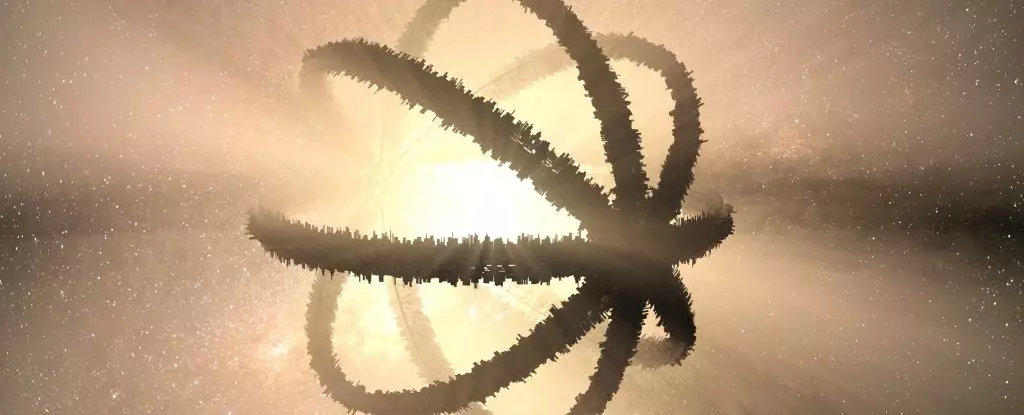In the realm of astronomy and the search for extraterrestrial intelligence, the concept of Dyson Spheres has long captured the imagination of scientists and enthusiasts alike. Recently, seven stars have been identified as potential candidates for these megastructures, with most of their radiation emitted in the infrared spectrum. However, a new study has put forward a different explanation – dust-obscured galaxies. Let’s delve deeper into this intriguing discovery and unravel the mysteries surrounding Dyson Spheres.
The idea of Dyson Spheres was first proposed by Freeman Dyson in 1960. According to Dyson, advanced civilizations could theoretically construct a vast network of power collectors and habitats around a star to harness its energy. This structure, known as a Dyson Sphere, would ultimately enshroud the entire star, leading to a detectable excess of infrared radiation. The search for Dyson Spheres has been a key component of the quest for alien intelligence.
The Discovery
Project Hephaistos has identified seven M type stars as potential candidates for Dyson Spheres from a sample of 5 million stars cataloged by the Gaia astrometric satellite. Data from 2MASS and WISE infrared surveys were also utilized in pinpointing stars exhibiting the telltale signs of infrared excess. However, a recent study led by Tongtian Ren and team has cast doubt on the Dyson Sphere hypothesis, suggesting that the stars are more likely to be obscured by dust, mimicking the effects of the hypothetical megastructures.
The research team cross-referenced data from the Very Large Array Sky Survey and other radio surveys to further investigate the nature of the candidate stars. Radio sources were detected near three of the candidates – A, B, and G. Candidate G, in particular, exhibited features consistent with a distant galaxy undergoing active galactic phenomena. The presence of superluminal jets and obscured radiation pointed towards a natural astrophysical explanation rather than artificial construction.
While candidates A, B, and G were determined to be associated with galactic phenomena, the other four candidates remain enigmatic. The absence of matching radio sources does not definitively rule out the Dyson Sphere hypothesis, but it does highlight the need for more detailed surveys. The possibility of higher resolution radio observations may unveil the true nature of these mysterious objects. It is essential to consider all possibilities, including the unlikely scenario of alien megastructures, until concrete evidence emerges.
The search for Dyson Spheres continues to captivate the scientific community, sparking debates and speculation about the existence of advanced extraterrestrial civilizations. While the recent findings point towards natural astrophysical phenomena rather than artificial constructs, the quest for understanding the cosmos and potential intelligent life beyond Earth persists. As we navigate the complexities of the universe, we must remain open to new discoveries and interpretations, always questioning and exploring the unknown. The mystery of Dyson Spheres may remain unsolved for now, but the pursuit of knowledge and exploration propels us ever forward in our quest for cosmic enlightenment.


Leave a Reply